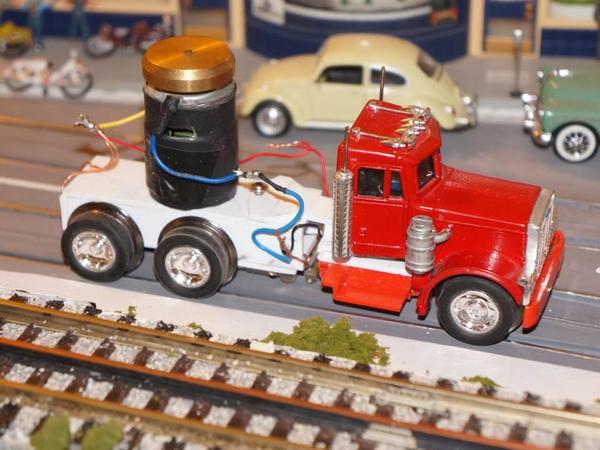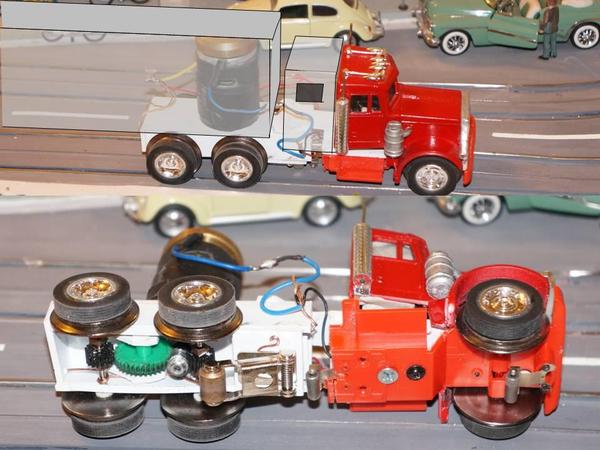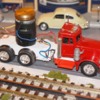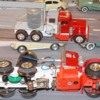Here is my first "next generation" tractor trailers - shown is the tractor only. My previous 18-wheelers used stock Superstreets drivetrains with diecast cabs added, and scratchbuilt trailers (some of which I will use for this next generation). Not surprisingly, they ran about like stock SS vehicles which means they did not run really slow: to run smoothly they had to go at a fast clip, otherwise they tended to be sensitive to momentary electrical pickup lapses that made them occasionally stagger/stutter. They also did not have the power to climb 10% grades particularly if those slopes were curves.
Obviously, I needed a higher gear reduction, a flywheel, and more power to get the type of smooth running and climbing I wanted. This puppy has all that in spades - in fact it will climb at least a 16% grade (2 inches up per linear foot of travel - the most I have tried - it might do more). As you can see, it is still a bit rough - but that will be taken care of: I will complete this as a fully detailed model. 
This tractor has both rear axles (all four wheels) driven. It uses wheels and axles from the Superstreets small school bus vehicl, but otherwise has a scratch built rear chassis and drive system, using a flywheel can motor (ex-Atlas Atlantic) and various pieces and gears in a sheet-styrene frame. This is coupled to a pivoting (so it can go around SS 16" curves no problem, despite its long wheelbase) front section made from the front 5/8 of another Superstreets short school bus. It has electrical pickup from all six wheels and three center rollers. As the photo above shows, the tractor's sleeper compartment and the trailer's box will hide the motor, wires, etc.
The video below shows it running - sorry its a bit rough but it is hard to hold and aim the camera and reach down and turn the throttle - if you see it vary its speed it is deliberate, trying to show how slow it can go, still smoothly, in the middle of the video.
Despite this success, based on what I learned building this and an earlier drive system that failed to perform well enough, I am going with "Plan B" for subsequent 18-wheelers: in that plan the 18-wheeler is driven entirely from the trailer, which has a swiveling two-axle "truck" (to use a RR term), one at each end, each truck has two axles but only one is driven. I think that will work better but won't go into it now as it is lengthy to explain why). Each end will be powered by a separate motor (i.e., two motors) and overall the trailer will weight a lot. The tractor will have only a front axle along with a wheelless chassis at the back and attach to the trailer's leading "truck" in a way that makes it look like that leading truck is part of the tractor.
I'll report more at stages as I finish this and the other 18-wheelers and a couple of ten-wheeler trucks, etc., I plan. This project is a lot of fun.








